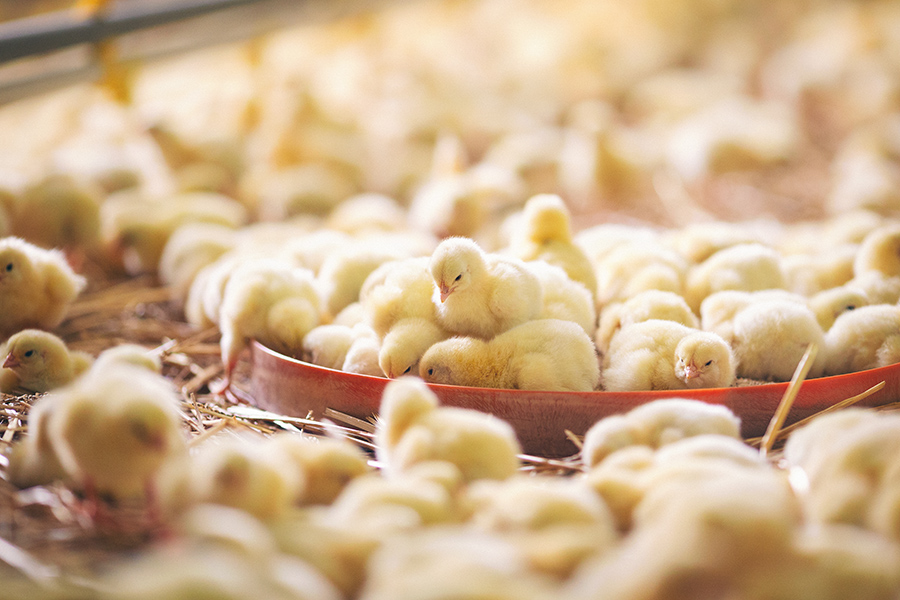| Common Disinfectants | Advantages | Disadvantages |
|---|---|---|
| Oxidizers E.G.Hydrogen Peroxide | Broad-spectrum activity | Corrosive, not effective in an organic matter |
| Alcohols (E.G. Ethanol) | Broad-spectrum,cheap | Evaporates, flammable |
| Halogens E.G. Iodine | Broad-spectrum,cheap | Corrosive |
| Phenolics E.G. Phenols | Effective in footbaths | Limited action |
| QAC E.G. TH4 | Broad-spectrum activity | Expensive |
| Ad-Spectrum Activity | Toxic, aldehydes e.g. Formalin | Expensive |
Learning Hub
Our commitment to customer success drive us to provide tools and resources necessary for your poultry business to achieve profitability.
Hygiene & Sanitation
As soon as the previous flock has been cropped/depleted, the house and equipment must be thoroughly cleaned and disinfected. Allow the house to remain empty for a minimum of two weeks before the next flock arrives. This reduces the buildup of disease-causing organisms. After the birds have been removed from the house, remove all equipment and dampen the ceiling, wall, and litter with water. This minimises dust during litter removal. Remove all old litter and dispose of it at least 1.5 km from the farm.
Do not store it on, or spread it near the flock house, as it can re-contaminate the clean house. To minimize the chances of disease transmission, all unused feed should be disposed of, and not stored for the next flock. Only feed in bags that are stored separately from the house can be kept. Wash the house with water and soap. Start with the roof, the walls and then the floor, in that order.
Allow the house to dry before spraying with disinfectant solution, again starting from the roof. Wash and disinfect all equipment from the house. Repair and maintenance of equipment should also be carried out during this time. You can also apply effective broad-spectrum disinfectant through a pressure washer with a jet nozzle. Thoroughly soak all the interior surfaces and equipment, working from top to bottom.
Common Disinfectants

Poultry workers should always wear disinfected clothing and footwear. When visiting birds of different ages, start with the youngest and always visit sick flocks last, irrespective of their age. Take measures to control all rodents, wild birds and insects, as they are known vectors of poultry diseases. Such measures can be mechanical, biological or chemical. Do not permit the introduction of materials and/ or equipment into the poultry house without thorough cleaning and disinfection.
If a water storage or header tank is present, where possible, open it and scrub it clean with a detergent. Drain the drinking system and header tank completely before adding a cleaning solution. It is best, if possible, to circulate the sanitizing solution in your drinking system. If not, leave it to stand in the drinking system for a minimum of twelve hours before completely flushing the system with clean water.

Poultry Centres Near Me
Stop by any Kenchic Poultry Centre for feeds, day old chicks, specialized technical and lab assistance or a quick consult with one of our vets.


